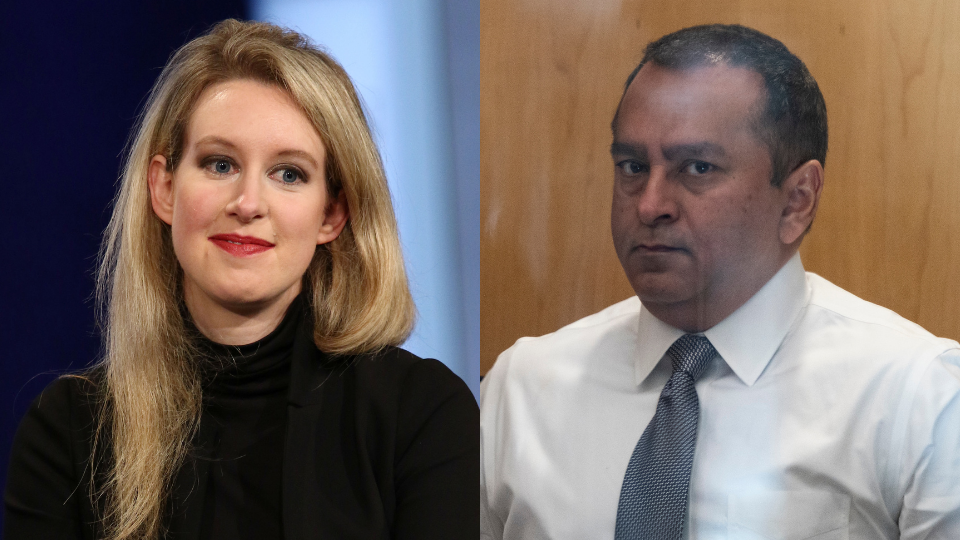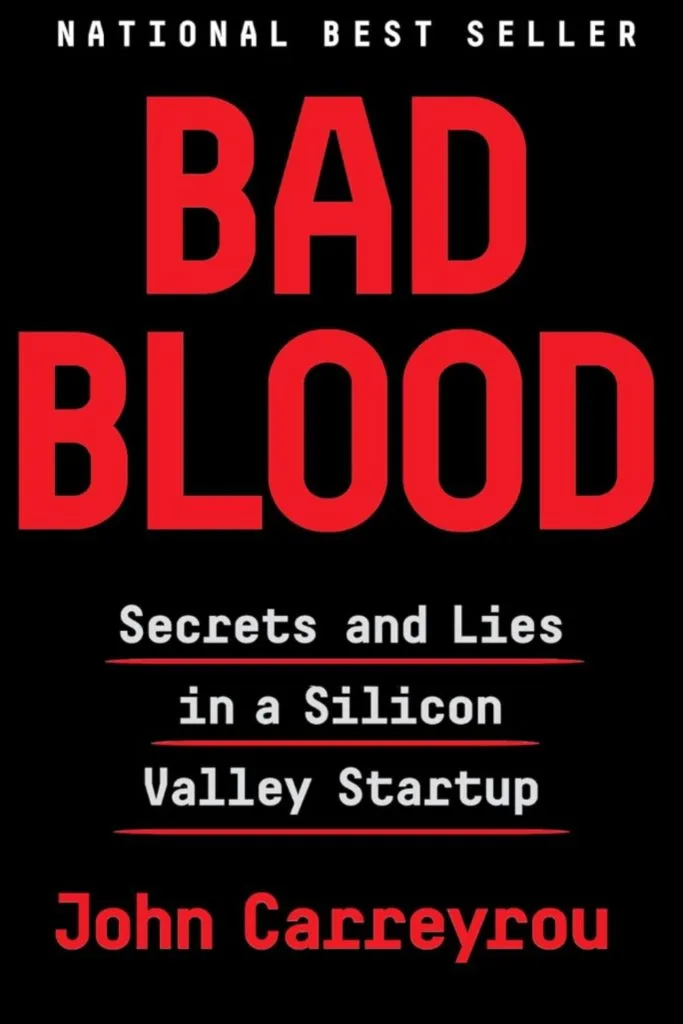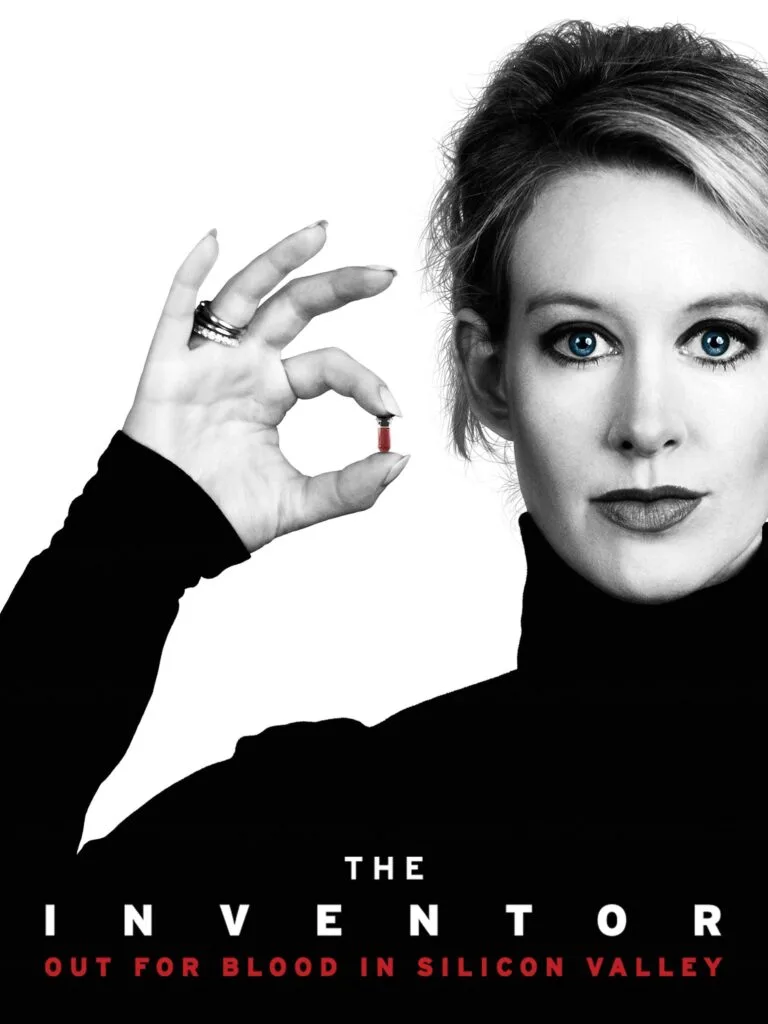Read about Elizabeth Anne Holmes’ Billion Dollar Hoax and uncover the details of how her ambitious venture turned into a massive scandal, shaking the healthcare world. Elizabeth Anne Holmes once hailed as the next Steve Jobs, masterminded one of Silicon Valley’s most shocking scandals. Holmes’ billion-dollar hoax unraveled, exposing the dark side of ambition in the tech world and marking her as one of the most infamous figures in modern business history.
Table of Contents
Elizabeth Holmes Parents: The Roots of Elizabeth Holmes

Elizabeth Holmes was born in Washington, D.C. in 1984 to parents Christian Holmes IV and Noel Anne Daoust. Christian previously served as a vice president at Enron, the energy company that collapsed due to a massive accounting fraud scandal. Noel Anne Daoust worked as a Congressional committee staffer. With successful parents, at a very young age, Elizabeth knew that she’d create and build something to effect change in the world.
Unlike most children her age, she found joy in intellectual pursuits rather than traditional playtime. Instead, she immersed herself in books and studies, seeking to unravel the secrets of how influential leaders inspired and guided others. After graduating high school in 2002, she enrolled at Stanford University, initially pursuing a degree in chemical engineering but later switched her major to electrical engineering. Her dream was to create a revolutionary technology that would enable early detection and prevention of diseases, transforming the healthcare landscape.
Elizabeth enthusiastically came up with the idea for a blood-testing device using a patch that could administer medicines to patients. Dr. Phyllis Gardner, a professor of medicine at Stanford University, advised her that the concept was scientifically impossible based on her knowledge of blood chemistry and medical technology. She suggested Elizabeth take more courses in hematology and consult with experts in the field.
Undeterred by the cautionary advice, Elizabeth maintained her conviction in the feasibility of the concept and sought guidance from Channing Robertson, the head of Stanford’s science department, who would later leave his academic position to join Theranos’ board. Ultimately, during Elizabeth’s freshman year, she filed her first patent application for a wearable drug-delivery patch that could administer medicines and detect infection. This initial patent would later serve as the foundation for her claims of revolutionary blood-testing technology at Theranos.
Visionary or Mirage? The Founding of Theranos
At nineteen, Elizabeth boldly abandoned her college education to chase her entrepreneurial vision: founding Theranos, a company that seamlessly merged therapy and diagnosis to revolutionize healthcare. She’d recognized a stagnant landscape in traditional lab testing, where methods relying on venous blood draws had remained virtually unchanged since the 1950s. The industry was characterized by centralized, large-scale instruments demanding substantial blood volumes. This presented an ideal opportunity for Elizabeth to disrupt the status quo and revolutionize the field of diagnostic testing.
As a woman executive defying the norms of male-dominated Silicon Valley, Elizabeth positioned Theranos as a force for social good. Her company was poised to disrupt the established, inefficient, and costly blood-testing industry, promising a revolution in medical treatment. The market was dominated by Quest and LabCorp, who controlled nearly 80%, maintained high prices, and lacked transparency, even facing lawsuits for overcharging government programs. Challenging these giants seemed daunting due to their extensive testing capabilities, but Elizabeth offered a compelling solution. Inspired by Thomas Edison’s audacious approach, embracing the “fake it till you make it” philosophy. Emulating the legendary inventor who famously feigned demonstrations of a functional incandescent lightbulb despite persistent setbacks, Elizabeth adopted a similar strategy.
For four years, Edison projected confidence in his invention’s viability until he ultimately triumphed over the technical challenges. Mirroring this audacious spirit, Elizabeth embarked on her own ambitious path, developing a revolutionary device aptly named “Edison” after her role model. Despite being an engineer with no medical background, she successfully developed a device. Using the nanotainer—a small, proprietary blood collection vial developed by Theranos, designed to hold a tiny amount of blood, typically obtained through a finger prick—they were able to conduct Theranos’ revolutionary blood tests. The nanotainer was central to Elizabeth’s vision of revolutionizing healthcare by making blood testing more convenient and accessible.
Silicon Valley’s Siren: Elizabeth’s Seduction of Investors
She cultivated relationships with powerful older white men who were captivated by her charm and beauty. Her unwavering confidence, coupled with her compelling vision for revolutionizing healthcare, created an aura of credibility and potential. Her deep baritone voice and piercing blue eyes further enhanced her persuasive powers, drawing people in and making them believe in her promises.
She expertly crafted a narrative of disruption and innovation, tapping into investors’ desire to be part of something groundbreaking. Her youth and unconventional approach added to her allure, making her appear as a visionary leader capable of achieving the impossible. She skillfully leveraged her charm and storytelling abilities to secure substantial funding, ultimately raising hundreds of millions of dollars for Theranos despite the lack of scientific evidence to support her claims.
Her connections with high-profile investors granted her access to influential figures in government and the Department of Defense. While she boasted of military contracts, she remained evasive about the specifics and vaguely explained how the device functioned:
A chemistry is performed, so a chemical reaction occurs and generates a signal from the chemical interaction with the sample, which is translated into a result, which is then reviewed by certified laboratory personnel. [Thanks to] miniaturization and automation, we are able to handle these tiny samples.
Claims of using the Edison on wounded soldiers in combat zones were met with skepticism, especially when she refused Pentagon officials’ requests to conduct independent tests. Elizabeth maintained a strict policy of controlling demonstrations and tightly restricting access to the Edison prototypes, fueling doubts about the technology’s legitimacy.
False Hope in a Box: Theranos’s Technological Failure
In reality, the Edison device was plagued by a myriad of technical problems: temperature regulation was inconsistent, fluid transfer was unreliable, design changes were frequent, and the machine required extensive manual handling of potentially infectious blood and reagents. Further complicating matters, the machine was prone to freezing, components would detach during testing, and on one occasion, a centrifuge even exploded within the device. Elizabeth emphasized Edison’s automation capabilities, suggesting it could perform tests with minimal human intervention. However, the device was often prone to malfunctions and required manual adjustments, undermining this claim.
According to her, the device used microfluidic technology, manipulating tiny amounts of blood through channels to conduct multiple tests simultaneously. However, the actual technology was never fully explained or validated. She touted the use of proprietary algorithms to analyze the blood samples and deliver accurate results quickly. These algorithms were shrouded in secrecy and their effectiveness was never independently verified. She presented the Edison as a miniaturized laboratory capable of performing complex tests in a compact device. But the type of mechanics necessary for the device to perform as intended required excessive hardware, rendering it impractical for its intended size—the mechanisms simply couldn’t fit within the limited space.
When Elizabeth was confronted with this reality, she resorted to manipulative tactics, questioning the engineer’s commitment to the Silicon Valley ethos and suggesting they seek employment elsewhere if they didn’t share her vision. Her mantra, “Do or Do Not. There is no try,” borrowed from Yoda, exemplified her uncompromising approach.
Power Couple or Partners in Crime? The Scandalous Affair at the Heart of Theranos
Elizabeth Holmes and Sunny “Ramesh” Balwani’s relationship began in 2002, when Elizabeth was eighteen and Sunny was thirty-seven. He, having sold a tech company for millions in the late 90s, possessed expertise in software and IT, although not a deep understanding of the technology he was promoting. As their personal relationship evolved, so did their professional partnership at Theranos. Sunny saw Elizabeth as an iconic figure he could leverage to advance his own career. They cohabited and collaborated intensely, constantly communicating outside of formal meetings. Their public appearances together, including corporate presentations, concealed their romantic involvement.

Keen to mask the Edison’s flaws, the duo devised an elaborate deception for visiting investors and executives. They would showcase various Edison prototypes in a designated room, perform a fingerstick on the guest, and insert the blood cartridge into the machine.
While the guests were then led away for lunch or a tour, an engineer would discreetly remove the cartridge and take it to the lab for manual analysis. The engineer, on call for such occasions, would expedite the process and produce plausible results within an hour. These fabricated results would then be presented to the unsuspecting guests upon their return. The team’s relentless pursuit of the impossible, even in the face of inaccurate results and impractical designs, highlighted their disregard for scientific rigor.
When faced with obstacles, they simply sought out those who would readily agree with their vision, often targeting younger, less experienced individuals who were more susceptible to Elizabeth’s persuasive charm or Sunny’s domineering approach. The couple fostered a toxic work environment at Theranos, characterized by fear, intimidation, and secrecy. Employees were constantly monitored, their communication restricted, and their loyalty to the company rigorously enforced. Sunny, in particular, was known for his volatile temper and aggressive management style, often berating and belittling employees. The culture of secrecy discouraged dissent and open communication, leading to a climate of paranoia and distrust. Those who questioned the company’s methods or the validity of its technology were quickly silenced or ostracized.
This hostile atmosphere ultimately hindered innovation and prevented employees from raising valid concerns about the accuracy and reliability of Theranos’ blood tests, ultimately contributing to the company’s downfall. However, at first, Hannah’s renewed vigor offered a glimmer of hope—she seemed younger and stronger, a testament to Paolo’s revolutionary treatment. But those precious months were stolen away all too soon as the transplant proved unsuccessful, and Hannah tragically passed away.
Spinning the narrative that no patient on the brink of death should be denied a fighting chance, Paolo convinced himself and others that he’d given Hannah the opportunity she deserved, even if it wasn’t enough. Just like Christopher’s family, Hannah’s parents continued to believe in Paolo and hopeful that regenerative medicine would benefit families in the future.
The Silenced Scientist: Ian Gibbons’s Fatal Stand Against Fraud
In 2013, Ian Gibbons, a highly respected scientist and the first experienced hire at Theranos, played a crucial role in the development of the company’s patents, often going uncredited for his work. He served as a mentor to younger colleagues, sharing his expertise and guidance. However, despite his contributions, Gibbons found himself marginalized within the company, lacking an office and excluded from decision-making processes. As he analyzed the data, he realized the technology was flawed and raised concerns, ultimately clashing with Elizabeth Holmes and sunny over the truth about their inventions.

Theranos sought to prevent Gibbons from testifying in a patent lawsuit, fearing his testimony would invalidate some of the company’s patents by revealing Elizabeth’s false claims of inventorship. This pressure, coupled with the realization of the company’s deception, drove Gibbons into a deep depression. Overwhelmed by the potential consequences of the lawsuit and uncertain about his future, he tragically took his own life. Theranos’s only communication with his wife following his death was a callous request for confidential documents, demonstrating their disregard for his well-being and the profound impact of their actions. This starkly contrasted with Elizabeth’s carefully crafted image of caring leadership, exposing her true indifference towards her team.
The Wellness Center Illusion: How Theranos Misled Walgreens and Its Customers
The same year, Theranos launched its partnership with Walgreens, offering blood tests to real patients in Arizona. Elizabeth even successfully lobbied the House Health Committee to change the law, allowing patients to get bloodwork without a doctor’s prescription. However, behind the scenes, because the Edison machine was unreliable, and doctors faced difficulties obtaining information about Theranos’s testing methods, this led them to question the validity of the results.
Despite these concerns, Theranos’s free laboratory test vouchers fueled its popularity, creating a false sense of success. In 2014, a whistleblower confidentially reached out to the media, alleging threats from Theranos’ prominent attorney, David Boies, who was attempting to silence them through legal intimidation. The whistleblower exposed a critical truth: the Edison could only perform a limited number of tests, while the vast majority of Theranos’s advertised 250 blood tests were actually conducted on commercially available lab equipment from companies like Siemens. Moreover, the company was misleading the public about the reliability and accuracy of their blood tests.
At Walgreens Wellness Centers, patients were subjected to traditional blood draws with needles instead of the promised painless fingerstick method, leading to anger and frustration among those who were misled. Regardless, the success of the initial Walgreens Wellness Center prompted the company to open ten more, overwhelming Theranos’ faulty system. To maintain the facade of groundbreaking technology, Theranos resorted to deceit, using venous blood drawn with traditional needles and acquired the same machines used by other labs. However, to uphold her vision, Theranos modified some machines to work with diluted capillary samples, while still using the outdated Edison prototype for a select few tests.
The claim of full automation was a blatant lie, as most testing was done manually by staff. Results were manipulated, quality control tests were repeatedly rerun until they passed, and tests were conducted on known faulty devices. In some cases, the results were so alarming that patients were advised to seek emergency medical attention. Despite these glaring issues, Theranos continued to assert the safety and validity of their testing methods.
The Art of the Con: Elizabeth’s Masterful Manipulation of Regulatory Agencies
Elizabeth’s unwavering conviction was infectious. She embodied the “fake it till you make it” ethos, drawing inspiration from Steve Jobs and envisioning Edison devices in every American home. However, achieving this goal required the Food and Drug Administration (FDA) approval, which proved elusive due to Theranos’s inability to provide sufficient data to validate their technology. While stalling for time to address the Edison’s flaws, Elizabeth claimed they couldn’t submit complete applications.
Meanwhile, Theranos submitted only third-party machine data to the Centers for Medicare & Medicaid Service (CMS)—the federal agency overseeing clinical labs—revealing their lack of confidence in the Edison’s performance. This deceptive tactic underscored the company’s desperation to maintain the illusion of progress while grappling with the reality of their failing technology.
Behind the scenes of the company, a sense of unease simmered beneath the surface despite the outward celebrations of minor victories. The FDA’s limited approval of the Edison for a rarely used herpes test came too late to save the Walgreens partnership, which had already stalled due to mounting concerns. Theranos’s boasts of billions in revenue were a facade, as the company had only generated a few hundred thousand dollars by 2015.
The Empire Strikes Back: Elizabeth’s Aggressive Response to Media Scrutiny
The Wall Street Journal published a damning exposé titled “Theranos Has Struggled with Blood Tests,” revealing federal laboratory violations, inaccurate results, the infrequent use of the Edison, and exaggerated claims. The article further exposed Theranos’ disregard for proper interpretation of test results, casting a shadow of doubt over the company’s integrity and the future of its technology.
In response to the Wall Street Journal article, Elizabeth held a company-wide meeting to vehemently deny the allegations and declare a fight against the newspaper. However, the article served as a stark wake-up call for Silicon Valley and investors alike. Despite the emerging accusations of fraud, remarkably, Elizabeth was inducted into the Harvard Medical School Board of Fellows. While in Boston, she appeared on the television show “Mad Money” to defend herself and refute the damaging claims in the article.
This is what happens when you work to change things and first they think you’re crazy, then they fight you. And then all of a sudden you changed the world… I have to say that I was honestly shocked to see that The Journal would publish something like this.
Due to the whistleblowers’ revelations, the FDA became alarmed by the nanotainer’s failures and banned the device, effectively eliminating the possibility of finger-prick blood tests. A surprise inspection by CMS uncovered “deficient practices” in Theranos’s lab that posed an “immediate jeopardy to patient health and safety.” Despite this, Elizabeth continued to make media appearances, boldly promoting the company and refuting criticisms.
She even claimed that Theranos had stopped using the Edison and was now relying on proprietary technology, a statement that further fueled skepticism. Meanwhile, more investigative articles surfaced, accusing her of intentionally misleading the public.She maintained her innocence, claiming she only became aware of her company’s issues when the government informed her of violations in the lab. Undeterred, she fought back by stepping into the spotlight to confront her critics head-on. She unveiled the “MiniLab,” a supposedly revolutionary invention, but in reality, it was just a modified version of the troubled Edison.
Elizabeth Holmes Prison: Theranos’s Legacy of Lies and Deception
By 2017, Theranos had burned through all of its $900 million in funding, with nearly $300 million spent on legal fees, lawsuit settlements, and refunds for patients in Arizona. Amidst this turmoil, Elizabeth Holmes and Sunny ended their relationship. Despite these setbacks, Elizabeth remained steadfast in her belief in her vision, refusing to acknowledge defeat. But in June 2018, a federal grand jury indicted her on nine counts of wire fraud and two counts of conspiracy to commit wire fraud.
These charges stemmed from allegations of deceiving investors and patients about the capabilities of Theranos’s blood-testing technology. Elizabeth Holmes sentence on November 18, 2022, to 11 years and 3 months (135 months) in federal prison. However, her sentence has since been slightly reduced due to good behavior. Her projected release date is now December 29, 2032.

In 2022, Sunny was found guilty on 12 counts of fraud and conspiracy related to his role in the Theranos scandal. He was sentenced to 12 years and 11 months in prison, plus three years of probation. He surrendered to authorities and began serving his prison sentence at FCI Terminal Island in San Pedro, California. But he attempted to delay his prison sentence by appealing his conviction, which was ultimately denied.
Elizabeth Holmes’s story is a complex one, marked by ambition, deception, and ultimately, legal consequences. While her vision for revolutionizing healthcare was ultimately flawed, her rise and fall serve as a valuable lesson for aspiring entrepreneurs and investors alike. The Theranos scandal serves as a stark reminder of the critical importance of thorough due diligence, ethical leadership, and unwavering prioritization of patient safety in the healthcare industry.
Elizabeth Holmes Cries
The disgraced Theranos founder, Elizabeth Holmes, 39, shared an emotional reunion with her husband and parents at a Texas federal prison camp, just days after surrendering to begin her 11-year sentence. The seven-hour visit, captured in photos obtained by the Daily Mail, showed Elizabeth visibly crying for much of the time.
Elizabeth Holmes Interview
Elizabeth Holmes gave an interview to The New York Times after years of silence. The interview, published in March 2023, focused on her personal life, her reflections on Theranos’s failure, and her new life as a mother. Key points from the interview:
Personal life: Holmes shared details about her relationship with her partner, Billy Evans, and their two children. She portrayed herself as a devoted mother, focused on her family and rebuilding her life.
Reflections on Theranos: While acknowledging the mistakes and harm caused by Theranos, Holmes maintained that her intentions were good. She expressed regret for not addressing the company’s problems sooner but stopped short of taking full responsibility for the fraud.
Moving forward: Holmes expressed a desire to contribute to society in a positive way and mentioned her interest in healthcare innovation. However, her legal restrictions and damaged reputation pose significant challenges to any future endeavors.
The interview generated mixed reactions, with some criticizing Holmes for not taking full accountability and others expressing empathy for her personal struggles. It also sparked discussions about the media’s portrayal of her and the potential for rehabilitation for white-collar criminals.
Similar ” White Collar Crimes ”
- Sam Bankman-Fried: Rise and Fraud of the Pied Piper of Crypto
- Bernard Lawrence Madoff: The Architect of the Largest Ponzi Scheme in History
- Dr Paolo Macchiarini: Regenerative Plastic Organ Fraud
Adam Neumann vs Elizabeth Holmes Reddit
On Reddit, discussions comparing Adam Neumann and Elizabeth Holmes often focus on the following aspects:
Nature of the fraud: Holmes is widely criticized for perpetuating a complete fabrication with Theranos, while Neumann’s WeWork had a legitimate product/service but with a flawed business model and misleading financial projections.
Outcome and consequences: Holmes received a substantial prison sentence, while Neumann walked away with a hefty payout despite the downfall of WeWork. This disparity in outcomes sparks debate about accountability and the legal system’s treatment of corporate fraud.
Public perception and charisma: Both figures were known for their charisma and ability to attract investors, but Holmes is generally viewed more negatively due to the potential health risks associated with Theranos’s false claims.
Gender bias: Some discussions on Reddit suggest that gender bias may have played a role in the different outcomes for Holmes and Neumann, although this is a contentious topic with varying opinions.
These discussions can be found on various subreddits, including r/explainlikeimfive, r/AskReddit, and r/dataisbeautiful. Some relevant threads include:
ELI5: How is Adam Neumann different from Elizabeth Holmes: https://www.reddit.com/r/explainlikeimfive/comments/1an5mgl/eli5_how_is_adam_neumann_different_from_elizabeth/
It seems both Elizabeth Holmes (Theranos) and Adam Neumann (WeWork) both lied to investors but each had a very different outcome – Why is that?: https://www.reddit.com/r/AskReddit/comments/te6w17/it_seems_both_elizabeth_holmes_theranos_and_adam/
WeWork: Or the Making and Breaking of a $47 Billion Unicorn: https://www.reddit.com/r/WeWork/comments/mkcnyc/wework_or_the_making_and_breaking_of_a_47_billion/
Engaging with these discussions can offer a broad perspective on the contrasting cases of Adam Neumann and Elizabeth Holmes, their impacts, and the broader implications for corporate accountability.
Read “Bad Blood: Secrets and Lies in a Silicon Valley Startup”

Bad Blood: Secrets and Lies in a Silicon Valley Startup by John Carreyrou: This book, written by the Wall Street Journal reporter who broke the Theranos story, provides a detailed and gripping account of the company’s fraudulent practices and Holmes’s role in the deception.
Watch “The Inventor: Out for Blood in Silicon Valley”

Unmasking Theranos: A deep dive into the rise and fall of Elizabeth Holmes and her revolutionary blood-testing company, revealing the ambition and deception behind one of Silicon Valley’s most infamous scandals.
FAQs
Is Elizabeth Holmes a Sociopath?
Elizabeth Holmes has not been diagnosed with Antisocial Personality Disorder (ASPD), which is commonly associated with the term “sociopath.” While her actions at Theranos have been unethical and led to legal consequences, labeling her as a sociopath without a professional diagnosis is speculative.
Is Elizabeth Holmes still in Jail?
She was ultimately convicted of wire fraud and is currently serving an 11-year sentence in federal prison.
Who broke the Theranos scandal?
The Theranos scandal was brought to light primarily by journalist John Carreyrou. His investigative reporting for The Wall Street Journal uncovered the company’s fraudulent practices and misleading claims about its blood-testing technology. His work, detailed in his book Bad Blood: Secrets and Lies in a Silicon Valley Startup, played a crucial role in exposing the scandal.